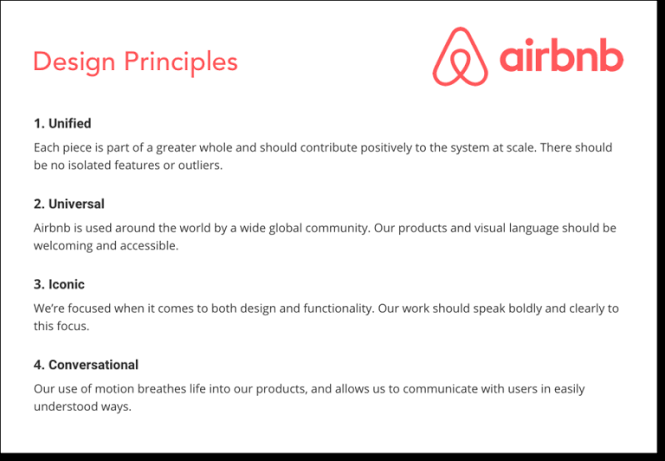Product Principles

Product principles are guiding statements that outline the core values and intentions behind a product’s design. They serve as a decision-making framework to ensure consistency, align teams, and prioritize unique, user-centered experiences throughout the product process.
Great product principles push products to unique heights. Align your team with a set of well-articulated, straightforward product principles.
Why Product Principles Are Important
Why should we emphasize product principles? They fundamentally support a product strategy. We've all observed projects that sidetrack. These guiding rules help everyone maintain a clear direction. Moreover, they provide a shared vocabulary understood by all stakeholders—from designers to developers. This unified understanding reduces miscommunication and enhances productivity. If you want your product to resonate with your brand’s mission and values, refine your product principles.
- Craft Magic Moments: Emphasize unique, memorable experiences that tie to the brand promise.
- Align Teams: Ensure everyone works toward the same product vision and values.
- Guide Decisions: Provide a framework for consistent, user-centered and brand-aligned choices.
- Deliver Consistency: Create a cohesive, reliable user experience across all touchpoints.
What Are Product Principles?
Consider product principles as the essence of the product development journey. They consist of actionable beliefs guiding how to design, build, and promote your products. Usually created by a product management team, they represent an organization's strategic priorities and ambitions.
Good Product Principles should:
- Be specific enough to measure
- Work throughout your product process
- Inspire your team to create better outcomes
- Challenge mediocre and half-assed results
- Be simple and memorable
- Differentiate your product from competitors
Each principle should be distinctive yet complement others as puzzle pieces creating a cohesive picture. Avoid creating principles that should be a baseline for all great products, like consistency, usability, performance, etc.
How Do You Create Product Principles?
Try a collaborative workshop. Bring together key stakeholders from across the organization. Aim for 8 people maximum.
Recommended Product Principles Workshop Agenda
- Generate characteristics and qualities (5 min): You will start by generating potential attributes for the ultimate product principles. This will help you create something that is truly differentiated. Set a timer for 5 minutes and have everyone write as many ideas as they can think of. One idea per post-it note. Read them out after.
- If our product was an animal, what animal would it be and why? (3 min): Set a timer and have everyone come up with ideas. 1 animal per post-it.
- If our product was a Place, what Place would it be and why? (3 min): Like the animal have people generate ideas for places. These are all to get people's creative ideas on the table.
- Define the descriptors and differentiators (5 min): Product principles should extend beyond the basic expectations that people assume for any product. What will make your product unique and is aligned to our core brand guidelines? Again one idea per post-it.
- Vote: Usually 4 - 6 votes depending on the number of differentiators. Look for some consolidation of votes.
You can take the voted principles, consolidate and polish them up. Try to wordsmith them to get that nice polish. Once drafted, share and refine these principles regularly. Nothing is fixed!
Examples of Product Principles
Different companies adopt a variety of product principles that may resonate with you. Here are some examples:
Example: Slack
- Don’t make me think
- Be a great host
- Prototype the path
- Don’t reinvent the wheel
- Make bigger, bolder bets

Example: Asana
- Allow users to focus on their work without interference.
- Increase confidence through clarity.
- Foster productive and emotionally satisfying interpersonal dynamics.
- Design for fast, effortless, and intentional interactions.
- Empower everyone through progressive discoverability.
- Be consistent and standard, and innovate when it’s worth it.

FAQs
What is the role of product principles?
- They guide decision-making and ensure the product aligns with its mission and user requirements.
How frequently should product principles be reviewed?
- It’s wise to reassess them annually or when major changes occur within the organization.
Can product principles clash with one another?
- Ideally, they complement each other, but if conflicts arise, prioritize those that align most closely with user needs.
Are product principles exclusive to large organizations?
- Not at all! Small startups can gain substantial advantages by establishing clear principles from the outset.
What is a common error when formulating product principles?
- Overcomplicating them with excessive detail. Keep them concise and actionable.
How do product principles affect user experience?
- They guide decision-making that directly influences how intuitive and satisfying the product feels.



